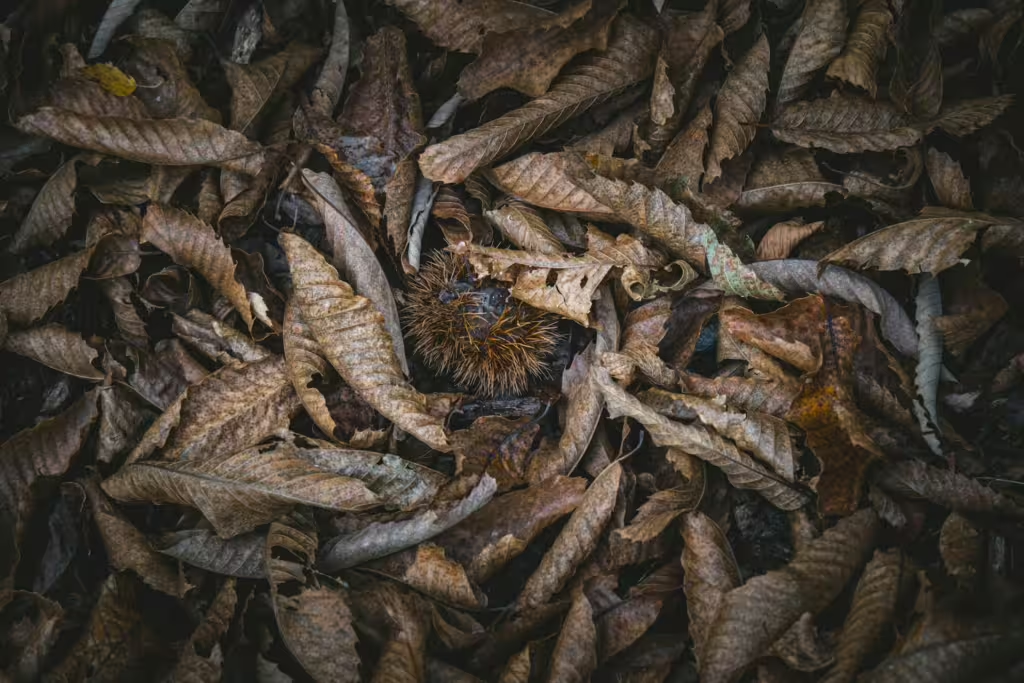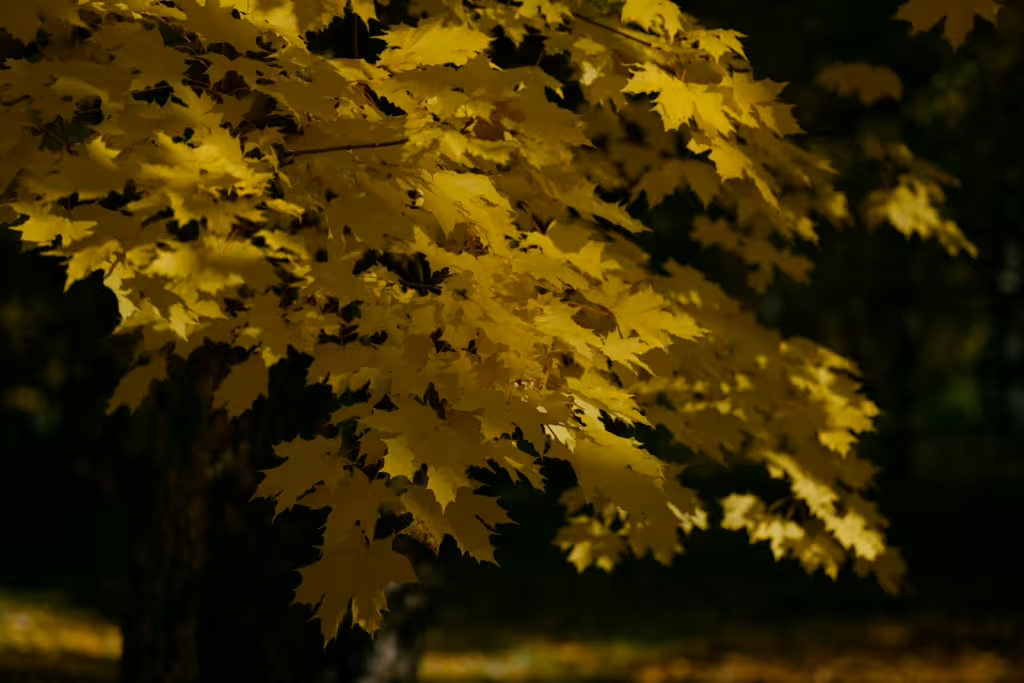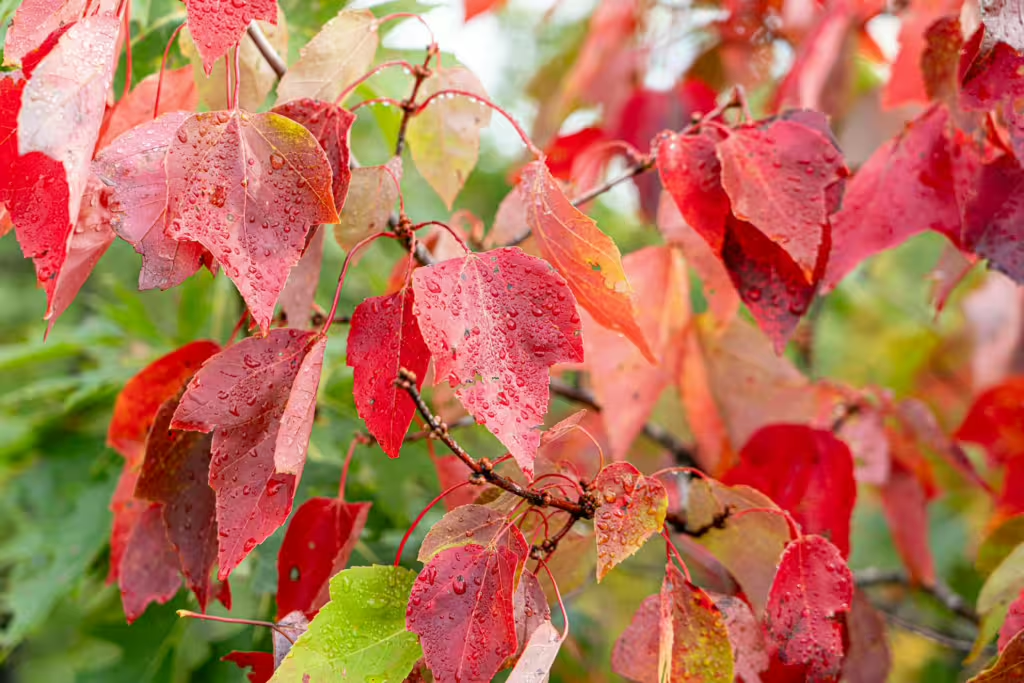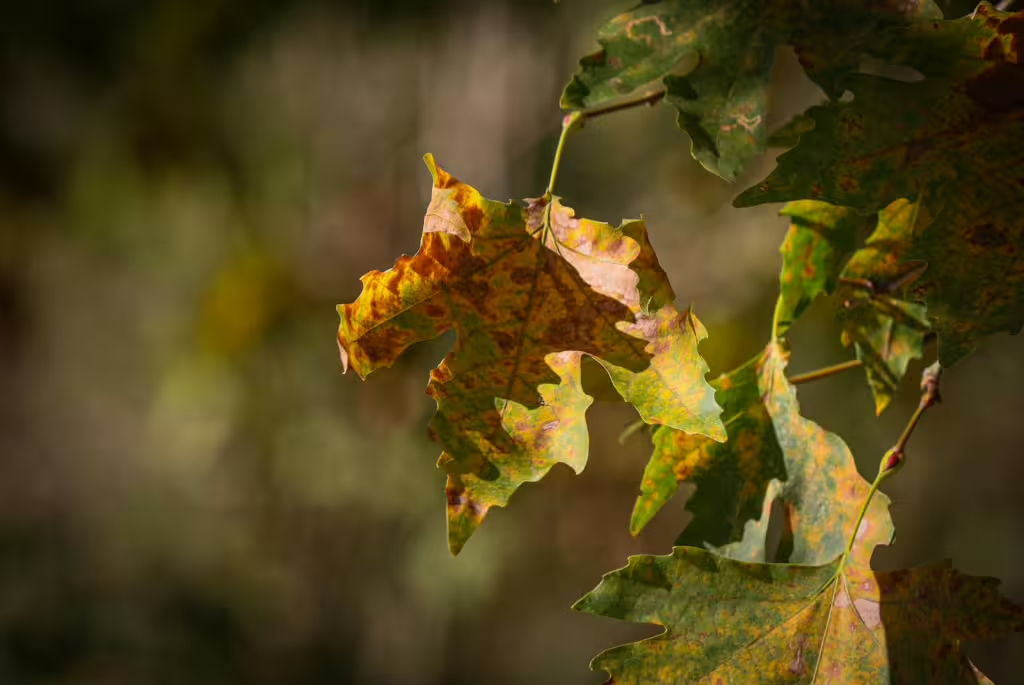With fall already in full-swing in the United States and elsewhere, we Americans are treated to the annual sight of brilliantly-colored fall foliage. Autumn is a magical time in temperate climates, when the green of the world begins to crack open in riotous color to reveal the impending winter. After a year of unabashed verdant shine, we get a new and dazzling display of reds, oranges, yellows, and purples. But why does this happen?
Many of us know about the change in leaf coloration from our time in grade school, but the secrets behind what’s happening inside them are more complex than a fourth-grade science experiment might explain. For today’s article, we will take a Magic School Bus-like journey into the very function of a leaf. We will explore the science behind the autumn color change and root out this clever bit of organic chemistry is just what plants need to survive the harsh winter.

The Power of Photosynthesis
If you want to know why leaves turn brown, orange, red, and more, you’ll first need to understand why they are green in the first place. Leaves are full of cells called chloroplasts, which are full of chlorophyll, a coloring molecule that helps to capture sunlight. Think of this molecule like a tiny solar panel, that enable’s the plant’s photosynthesis and allows it to turn the sunlight it absorbs into energy. Plants store that sunlight and, when combining with water and carbon dioxide, create glucose, a type of sugar that serves as food for the plant.
The chlorophyll itself is really the superstar in all this. It helps keeps plants alive but because of the way plants store energy, it is also responsible for the start of nearly all food chains on Earth. Animals, humans included, eat plant-based foods like fruits, vegetables, grains, nuts, and seeds, all of which store energy inside them thanks to the amazing power of photosynthesis. Chlorophyll is most potent in warm weather, like that in the spring and summer, it is when the cold starts to creep in, that chlorophyll begins to change and breaks down…
The Hidden Colors Inside Leaves
The thing is, the vibrant fall colors you’re used to are kind of always there, inside the leaves themselves. The carotenoids that make yellow and orange colors, anthocyanins that make red, purple, or even blue shades, and the tannins that create distinctive brown leaves; are all present in leaves at all times. During spring and summer, chlorophyll is made so quickly that it masks these other pigments. The bright green takes over, and the yellows and reds stay hidden. But as the seasons shift, the balance changes — and the hidden colors begin to shine through.
The Disappearing Chlorophyll
As summer ebbs away and autumn approaches, days get shorter. At the same time, nights get longer and temperatures begin to drop. Trees can sense these changes. They see these as a signal that winter is coming and they know that the cold and daylight deficit will make photosynthesis more difficult. To mitigate the damage to their normal feeding habits, trees go into a sort of energy-saving mode. They slow down the production of chlorophyll and the few molecules of the green stuff are reabsorbed into the tree. Meanwhile, nitrogen and phosphorus, nutrients that are typically found in the leaves, are moved into the roots and trunk of the tree, where they are stored until the following spring.
The Changing of the Guard
As the chlorophyll ebbs away, the carotenoids, anthocyanins, and tannins come to the leaf’s surface. Depending on the tree, those compounds are found in different concentrations. If any one is higher, then the result tends towards the color that compound represents; orange for carotenoids, red for anthocyanins, and so on.
That said, different weather conditions can also change how bright or dull these colors appear on certain leaves. Some examples include:
- Sunny days and cool nights, which can create more vivid reds.
- Cloudy or warm nights, which can lead to more muted colors in general.
- Early frost, which can damage leaves bring them right to brown rather than cycling through the colorful autumn array.
When the Leaves Fall…
Once the leaves have changed to the right color, the lot of them get involved in the ensuing “great leaf drop.” Eventually, the dead leaves, now cut off from the tree itself at the branches, fall away and become the next step of the life cycle in their ecosystem. Shedding the leaves helps the tree to conserve water and prevents damage from weighty snow and ice, but once they are gone, their eventual decomposition helps them to release their nutrients back into the soil surrounding the tree; thus enriching future plant growth.

Do All Trees Lose Their Leaves?
Now, not all trees follow this type of lifecycle or pattern. Indeed, only deciduous trees from temperate climates like maples, birches, aspens, hickories, and oaks, will lose their leaves in the autumn time. Meanwhile evergreens such as pines, firs, and spruce trees, have no such leaves to lose. These trees have evolved needles instead of leaves, which do the same thing but are hardier than any of the leaves on their deciduous neighbors. Those needles are full of chlorophyll but their waxy coating helps protect it from temperature changes.
How Animals Benefit from Falling Leaves
The annual change of the leaf colors isn’t just something to look at, it plays a crucial role in the surrounding ecosystem. Animals of all kind benefit from the fallen leaves. Take insects, like beetles and caterpillars, which can use fallen leaves for warmth in the colder months. Small mammals like chipmunks and squirrels also use these leaves in a similar way, namely to insulate the walls of their burrows. Birds that nest on the ground and some reptiles will also seek shelter in the leaf litter. While worms, fungi, and a million species of bacteria break down and devour the leaves as they decompose, ultimately enriching the soil via the process.
When Color Change Isn’t Normal: Leaf Blights and Diseases
Sadly, not every splash of color on a leaf is an indication of good health. Strange colors, markings, sports, streaks, and uneven patches that appear before autumn can be a sign that a blight is in the works. A blight is a disease that damages and usually kills plant tissues. It can come from a variety of sources: fungal, bacterial, or viral.
Whatever the case, the fact that these diabolical microorganisms infect leaf tissue means that they directly interfere with that plant’s ability to perform photosynthesis. When that happens, the plant’s natural chlorophyll breaks down, either unevenly or too early, revealing odd color that are rarely witnessed during the fall riot. Colors like rusty brown, gray, black, or yellow-green may be a sign that something is wrong.
Now, it should be noted that a healthy tree can usually survive the appearance of a mild blight. If the weather improves and the blighted leaves are pruned away, it may yet recover. Sadly though, when outbreaks are severe, blights can affect entire groves and can damage plants that have been rooted in an area for many generations.
If you notice leaves changing colors well before fall arrives and if those colors seem off or injurious, it could be a sign of one of the common types of leaf blight found below:
- Anthracnose: This blight is caused by fungi. It often creates dark, irregular blotches on leaves and tends to attack maple, oak, and sycamore trees.
- Tar Spot: Another fungal blight, this disease leaves shiny, black spots that look like drops of tar. It is especially noticeable on maple leaves and can be seen in the late summer.
- Leaf Spot Diseases: This particular species of fungi causes tiny brown or purple dots on leaves. Over time, these insidious spots will merge together, turning whole sections of a leaf pale or dead.
- Bacterial Blights: These blights tend to happen when leaves cannot dry out. They often start as water-soaked patches that turn brown and spread along the leaf veins, eventually blighting the whole leaf and all beyond.

True Investigator Says…
As you can see, the secret happenings going on beneath the veins of a leaf are as intricate and incredible as any other process in nature. As chlorophyll shifts and other pigments move in to take its place, the trees themselves prepare for a long sleep in the coming months. So the next time you walk outdoors with a comforting hot chocolate and feel the leaves crunching underfoot, remember the amazing journey those leaves went through to end up there and the fascinating life cycle that it portends.
Discover more from TrueInvestigator
Subscribe to get the latest posts sent to your email.


